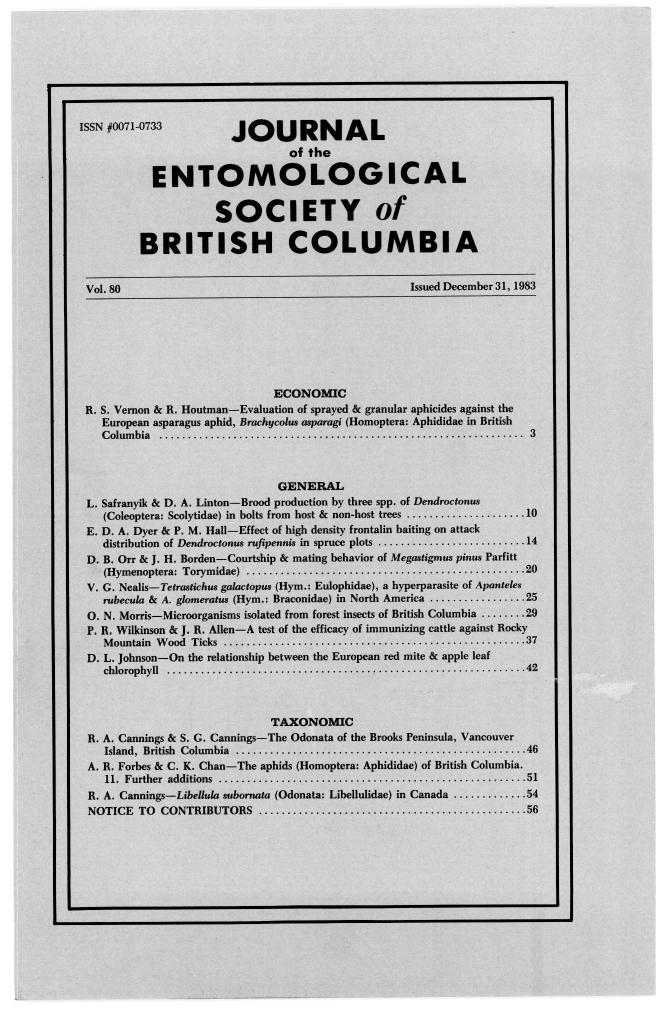<i>Libelula subornata</i> (Odonata: Libellulidae) in Canada
Abstract
The dragonfly <i>Libellula subornata</i>, a species of arid southwestern North America, is reported from Canada for the first time. Specimens collected over a number of vears at Nanaimo, British Columbia, have recently come to light. Features that distinguish this species from the common <i>Libellula forensis</i> and <i>L. lydia</i> are noted.References
Bick, G.H. and J.C. Bick. 1957. The Odonata of Oklahoma. Southw. Nat. 2:1-8.
Cannings, R.A. and K.M. Stuart. 1977. The dragonflies of British Columbia. British Columbia Provincial Museum Handbook No. 35. Victoria, B.C. 254 pp.
Kormondy, E.J. 1960. New North American records of anisopterous Odonata. Ent. News 71:121-130.
Levine, H.R. 1957. Anatomy and taxonomy of the mature naiads of the dragonfly genus Plathemis (Family Libellulidae). Smithson. Misc. Coll. 134(11):1-28.
Needham, J.G. and M.J. Westfall. 1955. A manual of the dragonflies of North America (Anisoptera) including the Greater Antilles and the Provinces of the Mexican border. University of California Press, Berkeley. 615 pp.
Walker, E.M. and P.S. Corbet. 1975. The Odonata of Canada and Alaska. III. University of Toronto Press, Toronto and Buffalo. 307 pp.
Downloads
Published
Issue
Section
License
Authors who publish with the Journal of the Entomological Society of British Columbia agree to the following terms:
-Authors retain copyright and grant the journal right of first publication with the work simultaneously licensed under a Creative Commons Attribution License that allows others to share the work with an acknowledgement of the work's authorship and initial publication in this journal.
-Authors are able to enter into separate, additional contractual arrangements for the non-exclusive distribution of the journal's published version of the work (e.g., post it to an institutional repository or publish it in a book), with an acknowledgement of its initial publication in this journal.
-Authors are permitted and encouraged to post their work online (e.g., in institutional repositories or on their website) prior to and during the submission process, as it can lead to productive exchanges, as well as earlier and greater citation of published work (See The Effect of Open Access).


